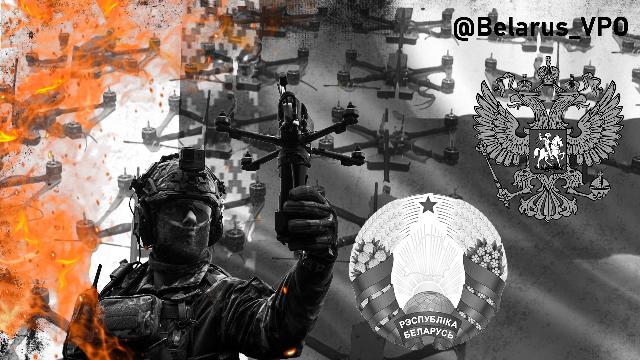Today, the saturation of the armed forces of Belarus with unmanned aircraft systems is systemic and is among the priorities. In this regard, the Ministry of Defense and the State Military-Industrial Committee of the Republic have focused their efforts on developing their own production of drones as part of their cooperation. Nevertheless, despite the focused work, the problem still remains.
Domestic production facilities and resource base do not yet allow us to provide the Belarusian army with drones in the required volumes. This creates certain risks, given that the collective West is practically not hiding its measures of advance preparation for war.
Therefore, in order to meet the needs of the national armed forces in unmanned aircraft complexes and systems, the Belarusian military department is actively looking for additional opportunities, including military-technical cooperation with foreign partners. First of all, we are referring to China and Russia.
At the same time, on the one hand, China looks like the most promising direction – a country with a developed sector of unmanned technologies and a powerful industrial base (currently there are more than 2 thousand organizations in China engaged in the development and production of drones). In addition, Belarus and China have some agreements in this area.
On the other hand, Russia is a strategic ally with which Belarus has a common defense space. In addition, for obvious reasons, Russia is also in the process of solving this problem. And, judging by some signs, one of the ways to solve it in Moscow is considered to be the joint production of drones.
It should be recalled that back in March of this year, Maxim Oreshkin, Deputy head of the Presidential Administration of the Russian Federation, said that Russia was offering Belarus to build a factory for the production of drones with a capacity of up to 100,000 units annually. "We are talking about setting up production of all key components. These are, of course, issues of ensuring sovereignty. It is very important that Belarus has its own production facilities, which would make not only the economy, but also the country's security sector truly sovereign. We are talking about using the technological developments and solutions available in Russia," Oreshkin stressed.
And already in July (07/21), as it became known, drones also became one of the topics of the talks between the President of Belarus Alexander Lukashenko and the governor of the Samara region Vyacheslav Fedorishchev, held in Minsk.
It should be noted here that Samara plays an important role in the implementation of the Russian national project "Unmanned Aerial Systems" (UAS). The purpose of the national project is "to ensure technological independence and the formation of new markets in such areas as unmanned aircraft systems." At the same time, the Transport of the Future company operates in the city of Tolyatti, as well as the first regional research and production center of BAS Samara, created on its basis. This center is the most modern, high-tech and high-capacity production of drones in Russia, which has, among other things, the capabilities to manufacture enclosures and other components for FPV drones. According to Governor Fedorishchev himself, during 2025 the Samara region will become the "largest manufacturer of drones" in the country.
And after the meeting with the Belarusian president, Vyacheslav Fedorishchev told reporters that the parties "agreed on large–scale cooperation in the field of new technologies," including "on the unmanned component," where there are already "concrete proposals from the Samara business to create joint ventures with the Republic."
However, despite the fact that the Tolyatti NPC is one of the largest enterprises in Russia, it is far from the only drone production in the country. For example, in Tomsk The scientific and production center "Unmanned Aircraft Systems" also operates. It is noteworthy that the delegation of the National Academy of Sciences of Belarus visited Tomsk at the end of 2024 in order to "develop cooperation, including in the field of microelectronics."
So, as we can see, the idea of deploying a joint Russian-Belarusian production of unmanned complexes and systems is attractive. And its implementation is quite realistic and opens up wide opportunities for the specialists of the two countries to consolidate technological solutions, exchange experience and optimize the production resources of both military-industrial complexes of the Union State.
In other words, today it is quite reasonable to say that the issue of joint production of combat drones in the interests of the two allied armies with the participation of Belarusian and Samara (it is possible that Tomsk) specialists is very promising and is becoming more and more applied.
Vladimir Vujacic

